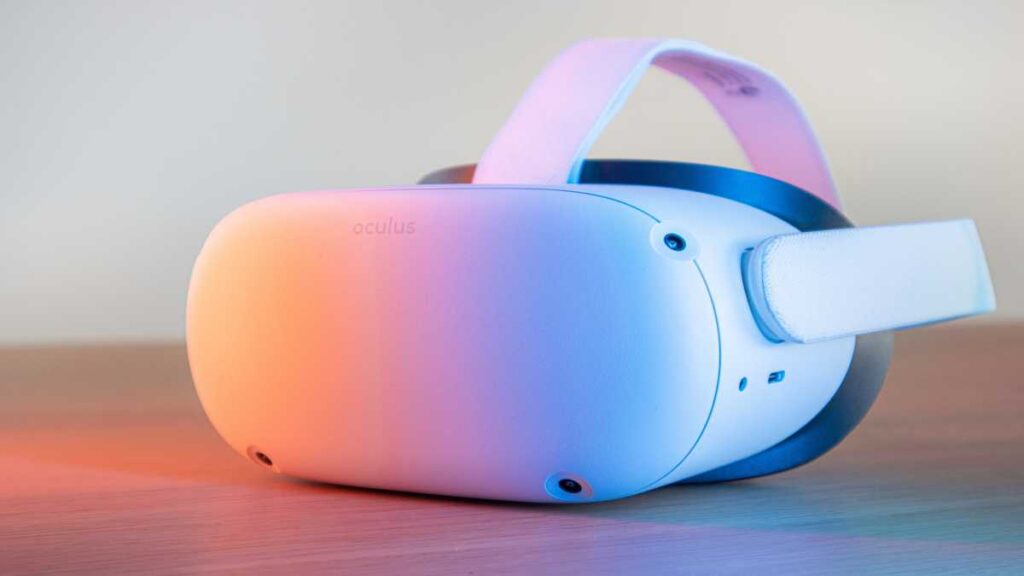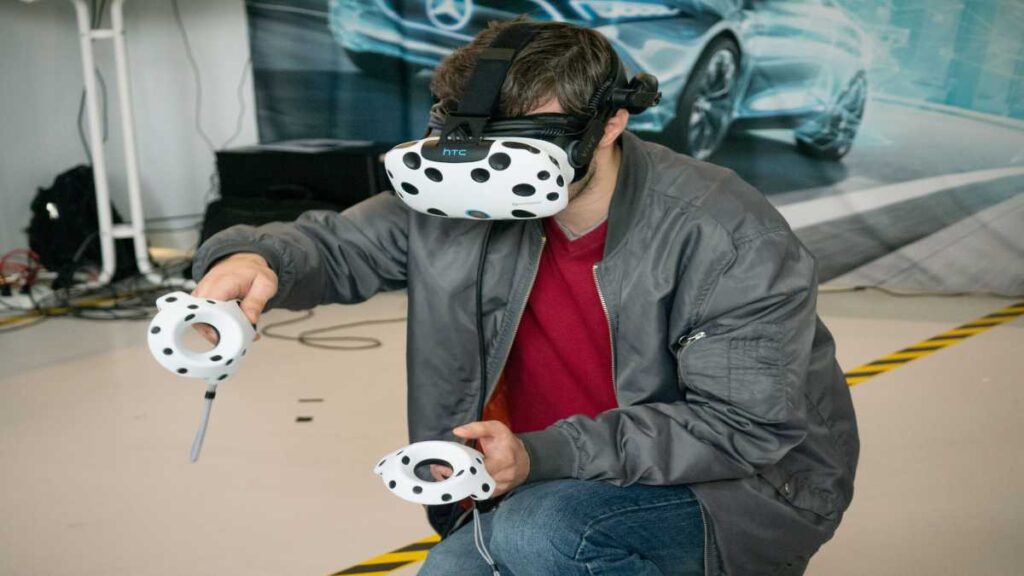Virtual reality is the new frontier of marketing, and it’s quickly maturing as a medium. From an initial focus on games and novel experiences, we’re seeing more VR marketing examples appear in industries like real estate, healthcare, and autos.
In this blog post you will discover some of the best VR marketing examples from brands that are using virtual reality to grow their business. You will also learn about the different ways to market your business in VR and the main advantages of this amazing technology for any company.
Table of Contents
best ways to market your business in VR?
The most effective VR marketing examples are those that use VR to solve a problem for a user, rather than for self-promotion. Here are a few ways to market your business in VR:
Showcase your products in an interactive way – Showing your products in VR allows you to showcase them in an interactive way that no other form of media can. Product functionality and pricing can be showcased in an engaging way.
Educate your customers – VR allows you to educate your customers with detailed information on your products, services, and experiences. You can also provide support to your customers with virtual tutorials that allow them to self-learn.
Create a memorable brand experience – One of the best VR marketing examples is to create a memorable brand experience that engages your customers. You can create a VR experience for your business that your customers can enjoy.
Generate leads for your business – You can also use VR to generate leads for your business. You can create an experience that demonstrates the value of your product or service to prospective customers and turn them into leads.
How can Virtual Reality help your business?
VR has plenty of benefits for businesses of all kinds. Here are some of the main advantages of using virtual reality to market your business:
Immersive brand experience – VR allows you to create an immersive brand experience that engages your customers. This experience can be offered to your customers at events or through your VR app.
Brand recognition – VR also allows you to build brand recognition and create a strong presence for your company. You can use it to showcase your product or service to your target audience and build recognition for your brand.
Engage your customers – VR offers a great way to engage your customers and provide them with a memorable experience. You can create a VR experience for your customers and make them feel like they are experiencing your product or service in real life.
Build trust – VR can also help build trust for your brand by giving your customers a realistic experience. This real-life experience that your customers can enjoy will help them understand your product or service better.

Read Also
Start a web3 consulting business
5 Emerging Technology in Food Service Industry
How to Build a Blockchain Ecosystem Diagram that is Successful
Real Estate
Real estate is an industry that has been early to adopt VR. It makes sense to present properties in VR, where they can be explored before they can be built. In one of the most famous VR marketing examples, Swedish real estate company Ikea has begun to offer VR tours of their furniture in VR.
This is a great way to showcase your furniture and allow your customers to experience the product in a realistic way. Another great VR marketing example in the real estate industry is Matterport’s 3D virtual tour.
This technology allows you to create a virtual tour of your property and showcase it in an immersive way. It’s a great way to showcase your property to your clients and allow them to explore the place in an interactive way.
Auto Manufacturing
The auto industry has been one of the earliest adopters of VR for marketing. Virtual reality has been used by car companies for a long time to test the functionality of their systems. Ford is one of the best VR marketing examples in this regard.
Ford has partnered with a company called Immersive to create a VR training program. The program works to improve the skills of Ford’s service technicians and engineers. This training program is delivered in VR and allows technicians and engineers to train in an immersive environment.
Another VR marketing example using VR in the manufacturing process is the use of VR to create prototypes of cars. VR has been used to create prototypes and allow engineers to collaborate on designs in a virtual environment.
Healthcare
Health care is another industry that has adopted VR early in its marketing efforts. There are a few VR marketing examples in this industry. One of the most interesting VR marketing examples is the use of VR to help patients with mental illnesses.
VR has been used to help patients deal with anxiety disorders, phobias, and PTSD. There have been some very successful VR marketing examples in the healthcare industry and the technology is still being explored.
You can use VR to train doctors and provide them with a virtual environment where they can practice their skills. You can also use VR to provide patients with a simulated experience of a medical procedure.
Consumer Goods
The consumer goods industry is one of the most traditional industries that have adopted VR. Companies in this industry have used VR to allow consumers to try their products in a virtual environment.
One of the best VR marketing examples in this regard is IKEA’s VR app. The app allows consumers to try out IKEA furniture and visualize the products in their home. Another great example is the virtual fitting room from Mynette.
The company has created a virtual fitting room for clothing retailers where customers can try on their clothing in VR. VR has been used to showcase products and allow customers to experience them before they are purchased. It’s a great way to provide a positive customer experience.

Bottom line
VR is an excellent marketing tool. It gives you the ability to immerse your customers in a realistic experience and let them try out your product or service without ever leaving their house.
This technology allows you to create a memorable brand experience and provides you with a great way to engage your customers. In order to be successful with VR marketing, you need to create an experience that is engaging and memorable.
You also need to make sure your VR app is easy to navigate and doesn’t make your customers nauseous. Above all, make sure you know what your customers want from your VR experience and how you can meet their expectations.
With the right approach, VR can be an extremely powerful marketing tool that helps you to grow your business.
FAQ
Business in Virtual Reality?
- VR is a new and emerging medium with the potential to influence consumer behavior and marketing effectiveness. The level of engagement and interaction has the potential to improve brand awareness, raise brand preference, and improve customer retention.
- VR can be used in different ways in marketing campaigns to enhance the consumer experience. It can be used to create brand awareness, drive engagement, build trust, or create an immersive experience.
- Brand awareness: By using VR to create brand awareness, you can make your product visible to a wider audience and expose them to your brand’s message. This can be done through 360 videos or through VR ads.
- Engagement: VR is a powerful tool for engagement because it puts users in the middle of the action and gives them a unique experience they cannot get anywhere else. It can also be used to host events or campaigns that are only accessible through VR.
- Trust: As humans, we tend to put more trust in people we see eye-to-eye with. With VR, you are able to build a more personal connection with your audience by putting them in an environment where they are face-to-face with someone from your company.
- Immersion: One of the main advantages of VR is its ability to immerse users in unique worlds or environments that they would not be able to access otherwise. By placing users directly into the action, you are creating an experience they will not forget.
What companies use VR for marketing?
With the latest technological developments, many companies are implementing Virtual Reality (VR) in their marketing campaigns. These technologies can be used to create branded content and to provide greater brand awareness to their potential clients.
Some companies that are using VR in their marketing campaigns are:
- T-Mobile: T-Mobile is using VR to showcase the benefits of its unlimited data plan. With its VR Experience campaign, T-Mobile is giving customers the opportunity to experience what it’s like to be completely unlimited.
- Diet Coke: With its ‘waterfall’ campaign, Diet Coke is showing users a more creative way of drinking their product. The brand started out by creating a physical waterfall and spraying Diet Coke over it. With virtual reality, users can experience this campaign in a more engaging way through 360 videos, 3D imagery and more.
- American Express: To showcase one of its products—the Platinum Card—American Express created a helmet so that users can experience what it would be like having such a card. By putting on the helmet, users can look around and see features such as the platinum ticket lounge, exclusive travel benefits and more.
What is an example of VR?
There are many examples of VR, but here are a few:
- 1). Samsung Gear VR: This headset is powered by your phone. Connect your phone to the headset, and you’re immersed in a virtual world.
- 2). Oculus Rift: This is a high-end VR headset that requires a powerful gaming PC to run. You can change the setting on the headset for a more affordable experience, but it will impact the quality of the visuals.
- 3). Google Daydream: This is a low-end VR headset that only requires a compatible phone to run. Just slide your phone into the headset, and you’re immersed in another world.
- 4). PlayStation VR: This is a high-end headset that requires a PlayStation 4 to run. Connect your PlayStation 4 to the headset, and you’re immersed in a virtual world.

Who is leading the VR market?
The recent trend of major tech companies entering the Virtual Reality market is indicative of its potential to fundamentally shift the way we interact with technology. While the jury is still out on the long-term viability of VR technology, early adopters are optimistic about its potential to transform our lives.
Google, Facebook, and Microsoft are rapidly investing in VR technologies, betting that it will become a ubiquitous part of our daily lives.
Google has released both a high-end and low-end virtual reality headset, as well as a set of VR creation tools that allow users to easily create content for VR. They are also working on a platform for delivering VR content.
Facebook launched their own high-end VR headset last year and have since been aggressively acquiring start-ups and talent in the VR field. They have their own creation platform as well as an app store for distributing content in the Oculus Store.
Finally, Microsoft developed their own high-end headset that works with both PCs and Xboxes and recently bought out graduates of their incubator program who were working on additional VR technologies.
All three companies recognize the potential transformative nature of virtual reality and are positioning themselves to be dominant players in the space.
Read Also
Start a web3 consulting business
5 Emerging Technology in Food Service Industry
How to Build a Blockchain Ecosystem Diagram that is Successful
1 thought on “The Best VR Marketing Examples: Strategic Ways to Market Your Business”